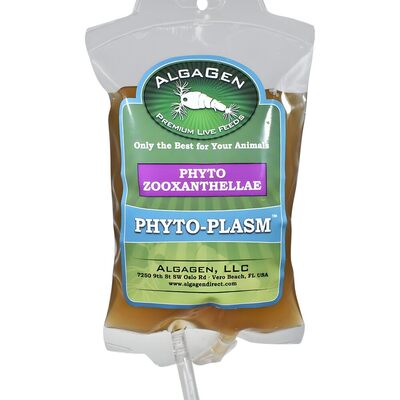Aquatic ecosystems teem with diverse life forms, among which copepods and amphipods stand out due to their ecological significance and unique characteristics.
Understanding the differences between these two groups of crustaceans and their roles in marine and freshwater habitats is crucial for appreciating the complexity and balance of aquatic environments.
Introduction to Copepods and Amphipods
Copepods and amphipods are tiny crustaceans in various aquatic habitats, from the deep sea to freshwater ponds.
Despite their small size, they play vital roles in the marine food web and contribute to nutrient cycling and energy transfer in their ecosystems.
What Are Copepods?
Copepods are a diverse group of small crustaceans, usually less than a millimeter in length.
They are a significant component of zooplankton communities and are abundant in marine and freshwater environments.
Copepods have a teardrop-shaped body and long antennae, which they use for swimming.
Several copepods, including calanoids, cyclopoids, and harpacticoids, are adapted to different ecological niches.
- Habitat: Marine and freshwater.
- Diet: Primarily phytoplankton, detritus, and tiny microorganisms.
- Importance: Crucial in energy transfer within the aquatic food web.
What Are Amphipods?
Amphipods, on the other hand, are small, laterally compressed crustaceans.
They range in size from a few millimeters to several centimeters.
Amphipods are typically found among algae, rocks, and sediment in benthic environments.
They have a more diverse diet than copepods, consuming detritus, algae, and small invertebrates.
- Habitat: Mostly benthic zones in marine and freshwater.
- Diet: Detritus, algae, and small invertebrates.
- Importance: Significant in nutrient cycling and as prey for larger animals.
Critical Differences Between Copepods and Amphipods
Understanding the differences between copepods and amphipods helps clarify their distinct roles in aquatic ecosystems.
Morphological Differences
-
Body Shape:
- Copepods: Teardrop-shaped with a single, prominent eye spot and long antennae.
- Amphipods: Laterally compressed with a curved body and numerous appendages.
-
Movement:
- Copepods: Use their antennae for propulsion, giving them a jerky swimming motion.
- Amphipods: Swim using their thoracic limbs, which provides a more stable and directional movement.
-
Size:
- Copepods: Generally smaller, typically less than 2 mm.
- Amphipods: Larger, ranging from a few millimeters to several centimeters.
Ecological Roles
-
Diet and Feeding Habits:
- Copepods: Mainly filter feeders that consume phytoplankton and microscopic particles.
- Amphipods: Scavengers and grazers, feeding on detritus, algae, and small invertebrates.
-
Habitat Preferences:
- Copepods: Found in the water column (planktonic) and on substrates (benthic).
- Amphipods: Primarily benthic, living on or near the seabed and among aquatic vegetation.
-
Reproductive Strategies:
- Copepods: Exhibit various reproductive modes, including egg sacs carried by females.
- Amphipods: Females carry eggs in a brood pouch until they hatch, providing some parental care.
Ecological Importance of Copepods and Amphipods
Both copepods and amphipods are integral to the health and function of aquatic ecosystems.
Role of Copepods
- Primary Consumers: Copepods are essential grazers of phytoplankton, forming a critical link between primary producers and higher trophic levels.
- Nutrient Cycling: By feeding on phytoplankton and detritus, copepods help recycle nutrients, supporting the productivity of aquatic ecosystems.
- Food Source: They are a primary food source for various fish, invertebrates, and even whales.
Role of Amphipods
- Detritus Breakdown: Amphipods contribute to the decomposition process by feeding on organic matter, aiding in nutrient recycling.
- Prey for Larger Species: Amphipods are a key food source for many fish and invertebrates, making them crucial in the food web.
- Habitat Engineering: By burrowing and feeding, amphipods can alter sediment structure, influencing the habitat for other organisms.
Applications in Aquaculture and Research
Copepods and amphipods are ecologically significant and valuable in aquaculture and scientific research.
Copepods in Aquaculture
- Live Feed: Due to their high nutritional content, copepods are used as live feed for the larval stages of fish and crustaceans, enhancing growth and survival rates.
- Nutrient Enrichment: Copepods are rich in essential fatty acids crucial for developing marine larvae.
Amphipods in Research
- Environmental Indicators: Amphipods are sensitive to environmental changes, making them valuable bioindicators for monitoring water quality and ecosystem health.
- Behavioral Studies: Their diverse behaviors and ecological roles provide valuable insights into benthic ecosystem dynamics.
Conclusion
In summary, copepods and amphipods are fundamental to the functioning of aquatic ecosystems.
Their distinct morphological traits, ecological roles, and contributions to nutrient cycling and energy transfer highlight their importance.
By understanding the differences and ecological significance of copepods and amphipods, we can better appreciate the complexity of aquatic life and the delicate balance that sustains these ecosystems.
Whether in natural environments or applied settings like aquaculture, these tiny crustaceans continue to play pivotal roles, underscoring the richness and diversity of life in our waters.





Recent post